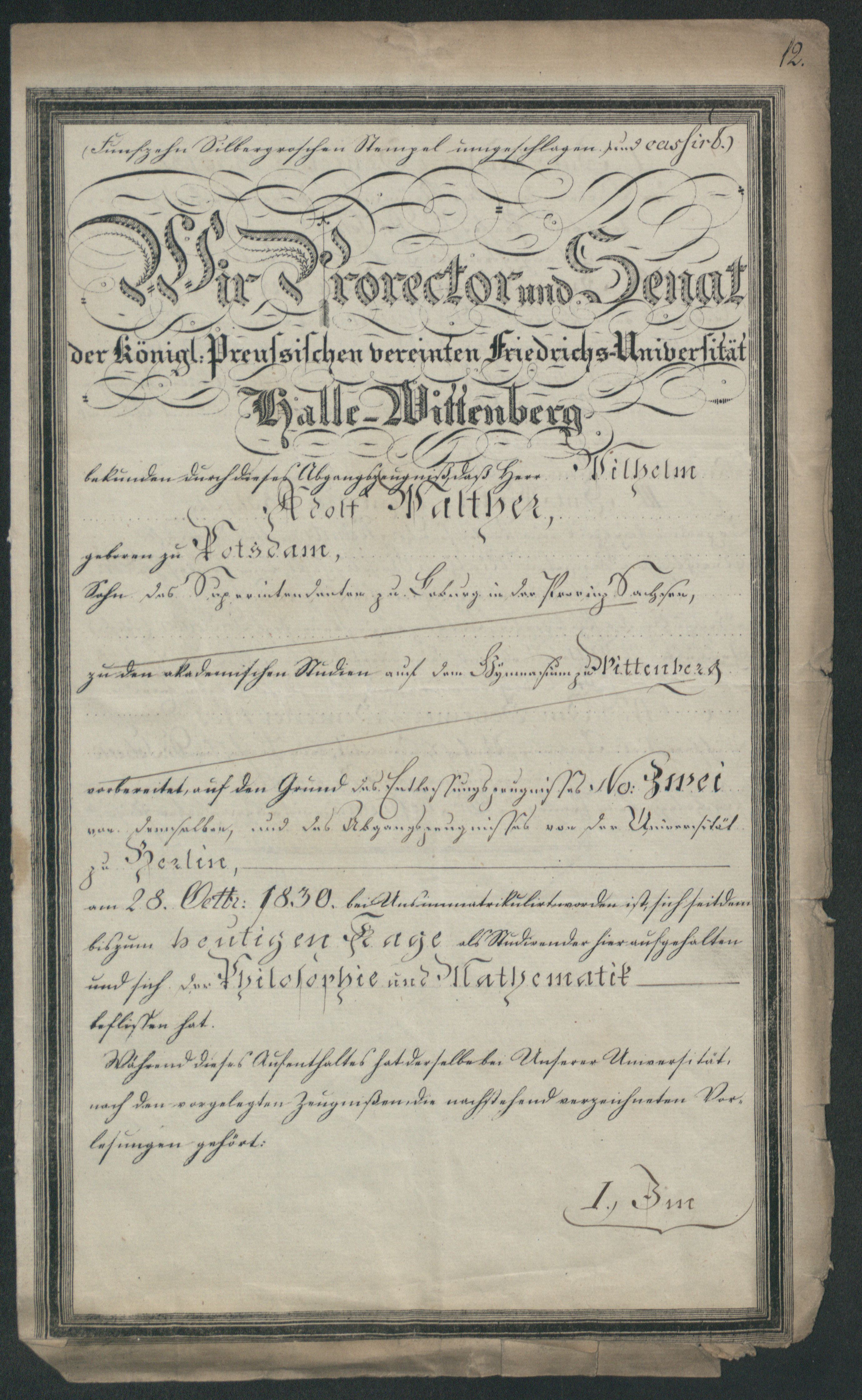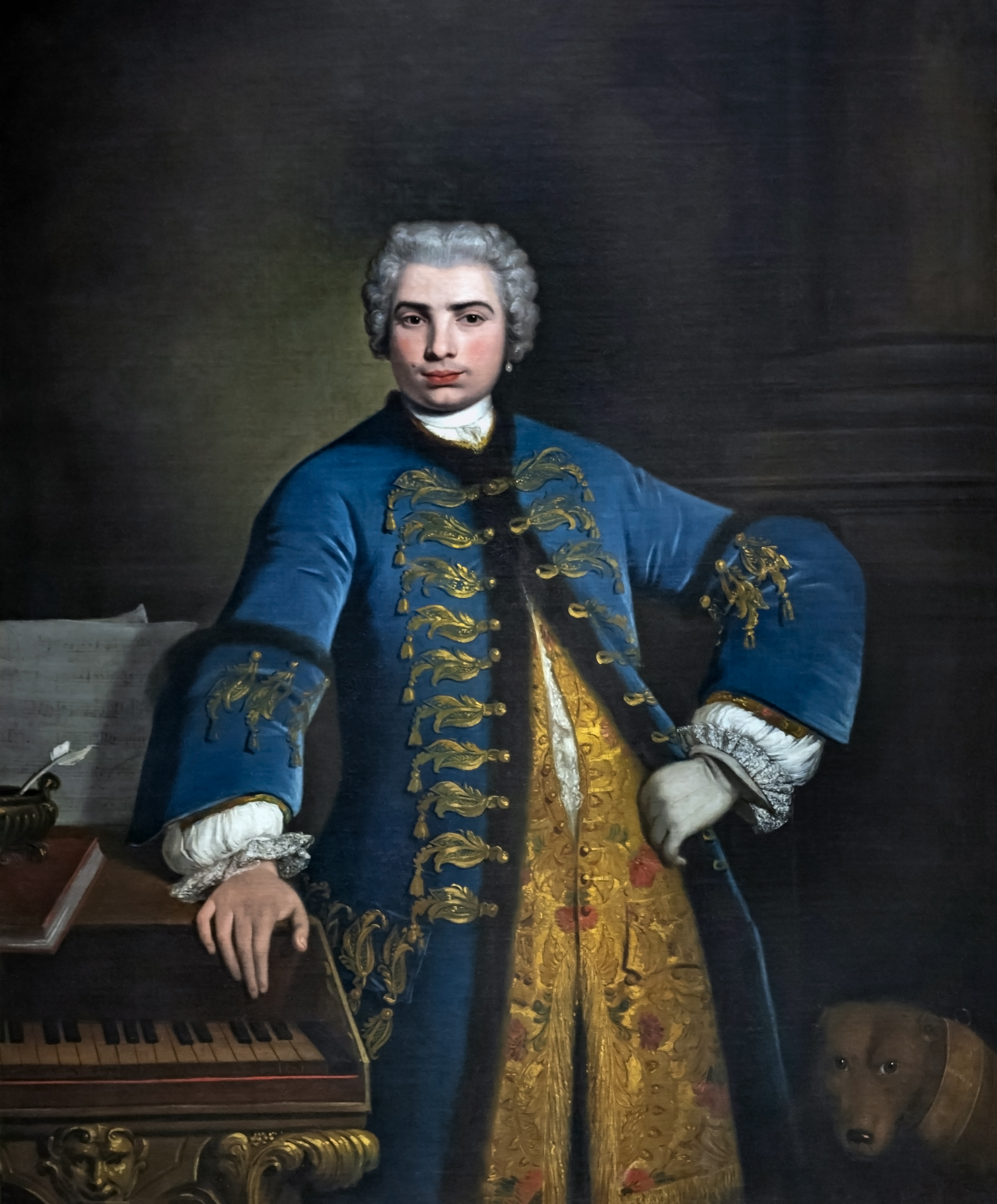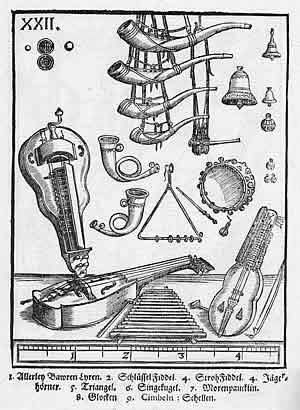|
Christoph Praetorius
Christoph Praetorius (died 1590) was an author, choirmaster and composer. He entered the University of Wittenberg in 1551. Christoph was born in Bunzlau, Silesia, but the date of his birth is unknown. His earliest composition, a funeral motet, appears to be from around 1560, which was the date of the first of four collections consisting of sacred music for vocalists. He served as Kantor at the Lüneburg Johannisschule from 1563 until 1581. He was obliged to resign as Kantor because he had become deaf, yet he continued his compositional activity as evidenced by a wedding motet written for Euricius Dedekind’s wedding. He published two books on music theory between 1563 and 1581. The last of his sacred vocal volumes appeared in 1581. He died in Lüneburg in 1590. His compositions have not been deemed masterworks, but his writings on music were widely quoted. They included the use of the 12 Glarean modes, coloratura training, and the use of ‘voces fictae’. He was the ... [...More Info...] [...Related Items...] OR: [Wikipedia] [Google] [Baidu] |
Bolesławiec
Bolesławiec (pronounced , szl, Bolesławiec, german: Bunzlau) is a historic city situated on the Bóbr River in the Lower Silesian Voivodeship, in western Poland. It is the administrative seat of Bolesławiec County, and of Gmina Bolesławiec (being an urban gmina in its own right). As of June 2021, it has a population of 38,280. Founded in the 13th century, the city is known for its long-standing pottery-making tradition and heritage Old Town. History The name Bolesławiec is derived from the Silesian duke Bolesław I the Tall. The castellany of ''Bolezlauez'' in Lower Silesia was first mentioned in a 1201 deed. According to tradition, its citizens took part in the Battle of Legnica during the first Mongol invasion of Poland in 1241. Bolesławiec celebrated its 750th anniversary in 2001. Middle Ages In the Early Middle Ages the region was inhabited by the Bobrzanie tribe, one of the Polish tribes, and it became part of the emerging Polish state under its first historic r ... [...More Info...] [...Related Items...] OR: [Wikipedia] [Google] [Baidu] |
Silesia
Silesia (, also , ) is a historical region of Central Europe that lies mostly within Poland, with small parts in the Czech Republic and Germany. Its area is approximately , and the population is estimated at around 8,000,000. Silesia is split into two main subregions, Lower Silesia in the west and Upper Silesia in the east. Silesia has a diverse culture, including architecture, costumes, cuisine, traditions, and the Silesian language (minority in Upper Silesia). Silesia is along the Oder River, with the Sudeten Mountains extending across the southern border. The region contains many historical landmarks and UNESCO World Heritage Sites. It is also rich in mineral and natural resources, and includes several important industrial areas. The largest city and Lower Silesia's capital is Wrocław; the historic capital of Upper Silesia is Opole. The biggest metropolitan area is the Upper Silesian metropolitan area, the centre of which is Katowice. Parts of the Czech city of Ostrav ... [...More Info...] [...Related Items...] OR: [Wikipedia] [Google] [Baidu] |
Lüneburg
Lüneburg (officially the ''Hanseatic City of Lüneburg'', German: ''Hansestadt Lüneburg'', , Low German ''Lümborg'', Latin ''Luneburgum'' or ''Lunaburgum'', Old High German ''Luneburc'', Old Saxon ''Hliuni'', Polabian ''Glain''), also called Lunenburg ( ) in English, is a town in the German state of Lower Saxony. It is located about southeast of another Hanseatic city, Hamburg, and belongs to that city's wider metropolitan region. The capital of the district which bears its name, it is home to roughly 77,000 people. Lüneburg's urban area, which includes the surrounding communities of Adendorf, Bardowick, Barendorf and Reppenstedt, has a population of around 103,000. Lüneburg has been allowed to use the title " Hansestadt" (''Hanseatic Town'') in its name since 2007, in recognition of its membership in the former Hanseatic League. Lüneburg is also home to Leuphana University. History ImageSize = width:1050 height:100 PlotArea = width:1000 height:50 left:50 bottom ... [...More Info...] [...Related Items...] OR: [Wikipedia] [Google] [Baidu] |
University Of Wittenberg
Martin Luther University of Halle-Wittenberg (german: Martin-Luther-Universität Halle-Wittenberg), also referred to as MLU, is a public, research-oriented university in the cities of Halle and Wittenberg and the largest and oldest university in the German state of Saxony-Anhalt. MLU offers German and international (English) courses leading to academic degrees such as BA, BSc, MA, MSc, doctoral degrees, and Habilitation. The university was created in 1817 through the merger of the University of Wittenberg (founded in 1502) and the University of Halle (founded in 1694). MLU is named after Protestant reformer Martin Luther, who was a professor in Wittenberg. Today, the university campus is located in Halle, while ''Leucorea Foundation'' in Wittenberg serves as MLU's convention centre. Both Halle and Wittenberg are about one hour from Berlin via the Berlin–Halle railway, which offers Intercity-Express (ICE) trains. History University of Wittenberg (''Universität Wittenbe ... [...More Info...] [...Related Items...] OR: [Wikipedia] [Google] [Baidu] |
Heinrich Glarean
Heinrich Glarean also styled Glareanus (born as Heinrich Loriti on 28 February or 3 June 1488 – 28 March 1563) was a Swiss music theorist, poet and humanist. He was born in Mollis (in the canton of Glarus, hence his name) and died in Freiburg im Breisgau. Biography Glarean was born as Heinrich Loriti in Mollis in Canton Glarus to a politician. As a boy, he took care of cattle and received a good education. After a thorough early training in music, Glarean enrolled in the University of Cologne, where he studied theology, philosophy, and mathematics as well as music. It was there that he wrote a famous poem as a tribute to Emperor Maximilian I. Shortly afterwards, in Basle, he met Erasmus and the two humanists became lifelong friends. Glarean's first publication on music, a modest volume entitled ''Isagoge in musicen'', was in 1516. In it he discusses the basic elements of music; probably it was used for teaching. But his most famous book, and one of the most famous and influentia ... [...More Info...] [...Related Items...] OR: [Wikipedia] [Google] [Baidu] |
Coloratura
Coloratura is an elaborate melody with runs, trills, wide leaps, or similar virtuoso-like material,''Oxford American Dictionaries''.Apel (1969), p. 184. or a passage of such music. Operatic roles in which such music plays a prominent part, and singers of these roles, are also called coloratura.Steane, J. B.; Jander, Owen, "Coloratura" in Sadie (1992) 1: 907. Its instrumental equivalent is ornamentation. Coloratura is particularly found in vocal music and especially in operatic singing of the 18th and 19th centuries. The word ''coloratura'' ( , , ) means "coloring" in Italian, and derives from the Latin word ''colorare'' ("to color"). History The term ''coloratura'' was first defined in several early non-Italian music dictionaries: Michael Praetorius's ''Syntagma musicum'' (1618); Sébastien de Brossard's ''Dictionaire de musique'' (1703); and Johann Gottfried Walther's ''Musicalisches Lexicon'' (1732). In these early texts "the term is dealt with briefly and always with ... [...More Info...] [...Related Items...] OR: [Wikipedia] [Google] [Baidu] |
Michael Praetorius
Michael Praetorius (probably 28 September 1571 – 15 February 1621) was a German composer, organist, and music theorist. He was one of the most versatile composers of his age, being particularly significant in the development of musical forms based on Protestant hymns. Life Praetorius was born Michael Schultze, the youngest son of a Lutheran pastor, in Creuzburg, in present-day Thuringia. After attending school in Torgau and Zerbst, he studied divinity and philosophy at the University of Frankfurt (Oder). He was fluent in a number of languages. After receiving his musical education, from 1587 he served as organist at the Marienkirche in Frankfurt. From 1592/3 he served at the court in Wolfenbüttel, under the employ of Henry Julius, Duke of Brunswick-Lüneburg. He served in the duke's State Orchestra, first as organist and later (from 1604) as ''Kapellmeister'' (court music director). [...More Info...] [...Related Items...] OR: [Wikipedia] [Google] [Baidu] |
Renaissance Composers
The Renaissance ( , ) , from , with the same meanings. is a Periodization, period in History of Europe, European history marking the transition from the Middle Ages to modernity and covering the 15th and 16th centuries, characterized by an effort to revive and surpass ideas and achievements of classical antiquity. It occurred after the Crisis of the Late Middle Ages and was associated with great social change. In addition to the standard periodization, proponents of a "long Renaissance" may put its beginning in the 14th century and its end in the 17th century. The traditional view focuses more on the Early modern period, early modern aspects of the Renaissance and argues that it was a break from the past, but many historians today focus more on its medieval aspects and argue that it was an extension of the Middle Ages. However, the beginnings of the period – the early Renaissance of the 15th century and the Italian Italian Renaissance painting#Proto-Renaissance painting, Pr ... [...More Info...] [...Related Items...] OR: [Wikipedia] [Google] [Baidu] |
1590 Deaths
Year 159 (CLIX) was a common year starting on Sunday (link will display the full calendar) of the Julian calendar. At the time in Roman territories, it was known as the Year of the Consulship of Quintillus and Priscus (or, less frequently, year 912 ''Ab urbe condita''). The denomination 159 for this year has been used since the early medieval period, when the Anno Domini calendar era became the prevalent method in Europe for naming years. Events By place India * In India, the reign of Shivashri Satakarni, as King Satavahana of Andhra, begins. Births * December 30 – Lady Bian, wife of Cao Cao (d. 230) * Annia Aurelia Fadilla, daughter of Marcus Aurelius * Gordian I, Roman emperor (d. 238) * Lu Zhi, Chinese general (d. 192) Deaths * Liang Ji, Chinese general and regent * Liang Nüying Liang Nüying () (died 159), formally Empress Yixian (懿獻皇后, literally "the meek and wise empress") was an empress during Han Dynasty. She was Emperor Huan of Han, Emper ... [...More Info...] [...Related Items...] OR: [Wikipedia] [Google] [Baidu] |
People From Bolesławiec
A person ( : people) is a being that has certain capacities or attributes such as reason, morality, consciousness or self-consciousness, and being a part of a culturally established form of social relations such as kinship, ownership of property, or legal responsibility. The defining features of personhood and, consequently, what makes a person count as a person, differ widely among cultures and contexts. In addition to the question of personhood, of what makes a being count as a person to begin with, there are further questions about personal identity and self: both about what makes any particular person that particular person instead of another, and about what makes a person at one time the same person as they were or will be at another time despite any intervening changes. The plural form "people" is often used to refer to an entire nation or ethnic group (as in "a people"), and this was the original meaning of the word; it subsequently acquired its use as a plural form of ... [...More Info...] [...Related Items...] OR: [Wikipedia] [Google] [Baidu] |
Year Of Birth Missing
A year or annus is the orbital period of a planetary body, for example, the Earth, moving in its orbit around the Sun. Due to the Earth's axial tilt, the course of a year sees the passing of the seasons, marked by change in weather, the hours of daylight, and, consequently, vegetation and soil fertility. In temperate and subpolar regions around the planet, four seasons are generally recognized: spring, summer, autumn and winter. In tropical and subtropical regions, several geographical sectors do not present defined seasons; but in the seasonal tropics, the annual wet and dry seasons are recognized and tracked. A calendar year is an approximation of the number of days of the Earth's orbital period, as counted in a given calendar. The Gregorian calendar, or modern calendar, presents its calendar year to be either a common year of 365 days or a leap year of 366 days, as do the Julian calendars. For the Gregorian calendar, the average length of the calendar year (the mea ... [...More Info...] [...Related Items...] OR: [Wikipedia] [Google] [Baidu] |







_1938.jpg)
